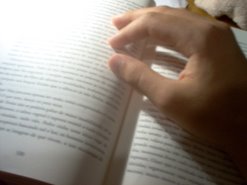In all communication, illusions materialize and disappear.
The Brecht theatre is a rich compound of images appealing
for our belief. When Brecht spoke contemptuously of
illusion, this was not what he was attacking. He meant the
single sustained Picture, the statement that continued after
its purpose had been served—like the painted tree. But
when Brecht stated there was something in the theatre
called illusion, the implication was that there was
something else that was not illusion. So illusion became
opposed to reality. It would be better if we clearly opposed
dead illusion to living illusion, glum statement to lively
statement, fossilized shape to moving shadow, the frozen
picture to the moving one. What we see most often is a
character inside a picture frame surrounded by a threewalled
interior set. This is naturally an illusion, but Brecht
suggests we watch it in a state of anaesthetized uncritical
belief. If, however, an actor stands on a bare stage beside a
placard reminding us that this is a theatre, then in basic
Brecht we do not fall into illusion, we watch as adults—and
judge. This division is neater in theory than in practice.
quinta-feira, 5 de janeiro de 2017
Subscrever:
Enviar feedback (Atom)


Sem comentários:
Enviar um comentário